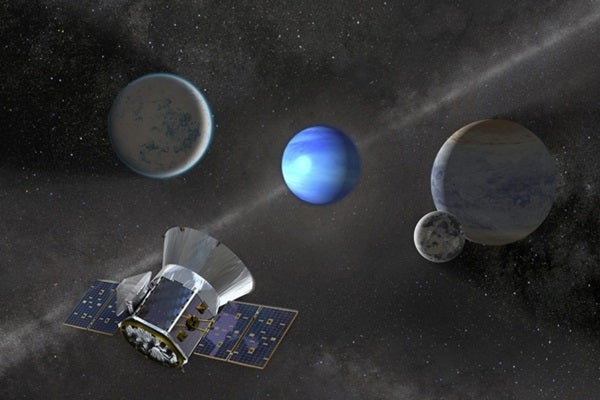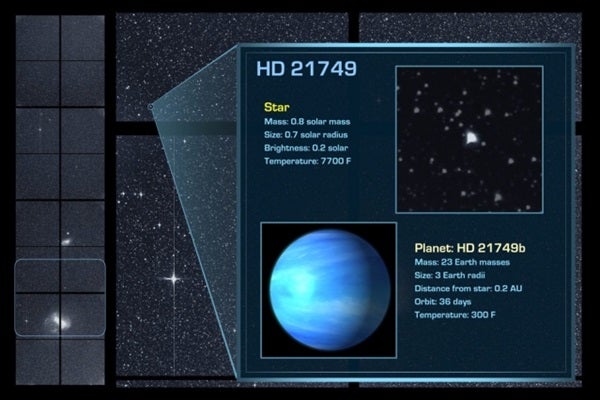As an added bonus, the newly confirmed world just so happens to be the longest-period confirmed TESS planet discovered to date. Furthermore, it also seems to have a planetary sibling that is surprisingly similar to Earth.
A hefty sub-Neptune
Located about 52 light-years from Earth in the direction of the Southern Hemisphere constellation Reticulum, HD 21749b is a strange world that orbits a bright, orange dwarf star once every 36 days.
Like many exoplanets discovered so far, HD 21749b sits very close to its star. Specifically, it orbits at a distance of just 0.2 AU (1 AU is the Earth-Sun distance of 93 million miles [150 million km]), so the newfound planet sits twice as close to its host star as Mercury is to the Sun.
Though HD 21749b is only about 3 times the size of Earth, it’s a whopping 23 times as massive. This means that the world has an overall density of 5.7 grams per cubic centimeter. (For reference, that’s significantly denser than diamond and titanium, and about half the density of lead; however, with an average density of 5.5 g/cm3, Earth is also pretty dense.)
A boiling Earth-sized world
In addition to finding HD 21749b, TESS also recently discovered an Earth-sized world orbiting the same system’s host star. However, since the planet has yet to be confirmed, it still holds the moniker TOI 186.02, which stands for “TESS Object of Interest 186.02.”
At roughly 80 percent the mass and 90 percent the size of Earth, if confirmed, TOI 186.02 would be the very first Earth-sized planet discovered by TESS.
However, just because a planet is about the same size and mass as Earth, it doesn’t mean it’s truly a fitting Earth analog. For example, TOI 186.02 has a very short orbital period of just 7.8 days and little is known about its composition or potential atmosphere. Furthermore, the world experiences temperatures of around 800 degrees Fahrenheit (430 Celsius), making it more akin to Venus than Earth.
No matter whether TOI 186.02 is truly a fitting Earth-like exoplanet or not, these new discoveries show that the multi-planet system HD 21749 is ripe for future study and exploration, so be sure to stay tuned.
The newly discovered planets were announced during this week’s 233rd annual meeting of the American Astronomical Society, held in Seattle, Washington.











